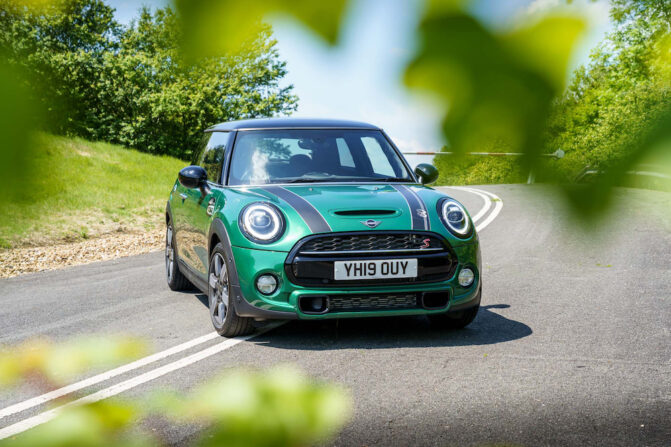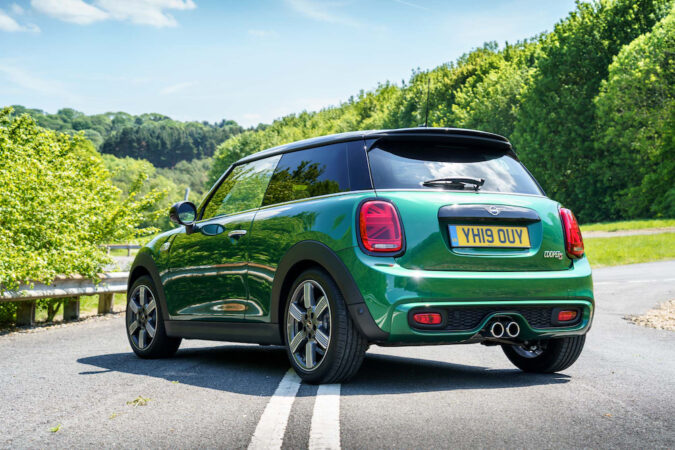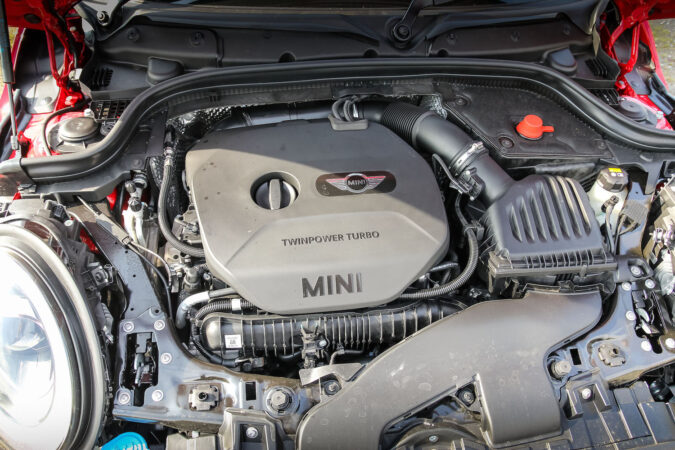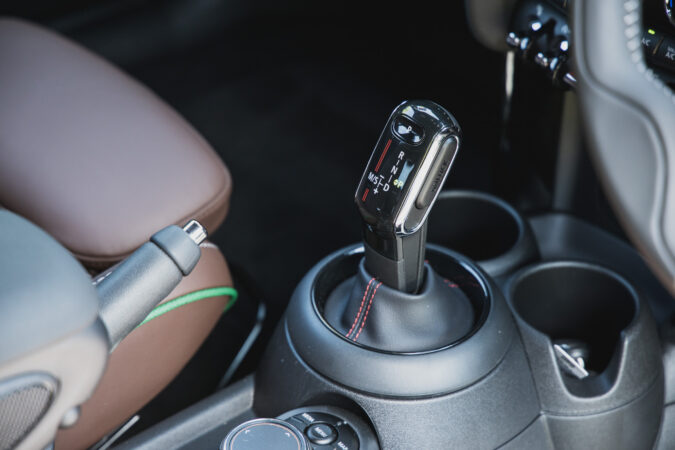The Mini Cooper is an automotive icon, blending fun, style, and go-kart-like handling into a compact package. However, while it might appear charming on the outside, it’s wise to avoid some Mini Cooper model years, as they suffer from serious reliability issues. Choose the wrong model year, and you’ll be saddled with expensive repairs and major headaches.
Through three generations of the modern Mini Cooper (excluding the newest fourth-gen car, which is still too new to assess), early model years often had the most problems, while later years saw key refinements. Here’s a quick breakdown of the worst Mini Cooper model years to avoid, and their most common problems:
- 2002-2004 Mini Cooper – CVT transmission failures, rust issues, and motor oil leaks.
- 2006-2009 Mini Cooper – Timing chain rattles, VANOS system failures, and clutch issues.
- 2013+ Mini Cooper – Improved reliability, but some early models still had engine and timing chain concerns.
With that in mind, let’s dive into each Mini Cooper generation, and let’s take a closer look at some of their most common problems that you need to watch out for.
Mini Cooper Years To Avoid – Reliability Comparison
We’ll be covering each specific Mini Cooper generation and their worst years to avoid in more detail below, but for now, here’s a quick comparison:
| Generation | Years Produced | Worst Years to Avoid | Key Issues | Reliability Trend |
|---|---|---|---|---|
| 1st Gen (R50/R53) | 2002-2006 | 2002-2004 | CVT transmission failures, rust, oil leaks, and expensive supercharger maintenance (Cooper S) | 🚩 Least reliable generation. Early models suffer from severe mechanical failures. |
| 2nd Gen (R56) | 2006-2013 | 2006-2009 | Timing chain rattles, VANOS system failures, water pump & thermostat leaks, as well as clutch failures | ⚠️ Early models struggle with reliability, but post-2009 refresh improves durability. |
| 3rd Gen (F56) | 2013-2024 | 2013-2015 (early models) | Timing chain concerns, sporadic engine issues, but it overall showed improved design over time | ✅ Most reliable generation. Later models correct past issues, but early ones had lingering issues. |
Mini Cooper Years To Avoid – 1st Generation
Built and sold from 2002 to 2006, the worst model years of this generation to stay away from at all costs are the Mini Cooper model years from 2002 to 2004. In stark contrast, the latter two model years of the 1st-gen Mini Cooper are way more reliable than the first two. Those supercharged engines are pretty fun, though try to avoid the CVT transmissions.
That said, here are some of the most common issues with the 1st-generation Mini Cooper…
1. CVT Transmission Failure
The first-generation Mini Cooper, built between 2002 and 2006, had numerous transmission options. Among them was a CVT transmission, which was notorious for issues. This particular gearbox often required a full rebuild, and it’s not cheap to do. The general average that we’ve found floats somewhere between $1,500 to $2,500 for a full CVT rebuild.
Common symptoms of this CVT transmission failing are usually preceded by gear slippage. This is when the transmission runs the engine at excessively high RPMs, or it won’t be able to engage gears at all. This is then followed by transmission failure, and the only “solution” that BMW/Mini offered was servicing it diligently every 30,000 miles.
2. Rust And Corrosion Issues
Now, it’s common for some older cars to rust, including those vehicles from the early 2000s. This is particularly so for folks who live in colder and wetter parts of the country. But, the 1st-gen Mini Cooper is more prone to rust than a lot of other vehicles. So, if you’re buying one, make sure to inspect the undercarriage and wheel wells to find any rust spots.
3. Motor Oil Leaks
Another common problem on these early Mini Cooper hatchbacks was having to deal with oil leaks. They’re pretty notorious on the 1.6-liter engines, especially at and around the crankshaft seals. Remember, there is a front and a rear seal, and the motor oil could leak out of either one. Unfortunately, BMW/Mini opted to cheap out with the crankshaft seals.
As such, they’re made from a low-quality rubber material that turns into a hardened, plastic-like material as it ages. When it does turn plasticky and hard, it can no longer seal the crankshaft properly. Subsequently, oil will leak through, and replacing the seals is expensive. The front seal is cheaper than the rear since the entire transmission has to come off.
4. Shock Tower Damage
The Mini Cooper is exposed to a lot of stress, given that it’s running a stiffer-than-usual suspension setup. Over time, this will add a lot of premature wear and tear on the shock towers, which causes them to wear out. You’ll notice cracks developing around the shock tower, and in some cases, even bent metal. The only solution here is to replace the strut towers.
5. Faulty Supercharger
Specifically for the Mini Cooper S, its supercharger needs to be serviced once every 100,000 miles. Alas, given how expensive it is, some owners opt to neglect it. Doing so, however, will cause damage to the supercharger. So, if you’re buying a used Mini Cooper S from this era, make sure the past owner has serviced the supercharger, or else you’ll need to replace it.
Mini Cooper Years To Avoid – 2nd Generation
Following up on the popular 1st-generation Mini Cooper, Mini and BMW brought their ‘A’ game when developing the 2nd-gen model. Produced between 2006 to 2013, it was a great follow-up to the earlier model, but it’s not perfect. In fact, it’s best that you avoid the 2006 to 2009 model years, which are among the worst Mini Cooper model years to avoid at all costs.
Granted, the refreshed late-2009 model is actually a bit better than the earlier ones, so you could go for that one, instead. All the while, the earlier model years might suffer from sporadic issues, such as power steering pump failures and faulty front radiators. Otherwise, here are some other issues to be wary of, and the worst Mini Cooper years to avoid…
1. Timing Chain Rattling
Since the 1.6-liter engine uses a timing chain, it’s not uncommon to hear a bit of rattling when you start the car. However, the poorer the service and maintenance record of the Mini Cooper in question, these timing chain rattles will be more pronounced. Replacing one is expensive, so make sure you check and see if the previous owner serviced their Mini properly.
2. Variable Valve Timing (VANOS) Problems
Mini and BMW use a variable valve timing system called ‘VANOS’. While the actual tech in there is impressive, they’re not well-regarded for durability. For Mini Coopers, in particular, VANOS problems are quite frequent. A bad VANOS pump will result in poor engine performance and difficulties running the engine, requiring a full rebuild.
3. Water Pump And Thermostat Leaks
Water pump and thermostat coolant leaks are notorious on the 2nd-generation Mini Cooper. Unfortunately, it also costs quite a lot to fix them. These leaks mainly develop from these two aforementioned parts. So, if you notice that the water pump hasn’t been replaced for some time or if it’s excessively consuming antifreeze, it’s worth avoiding it.
4. Automatic Transmission Failure
Just like the previous generation Mini Cooper, the 2nd-gen Mini Coopers also required diligent preventative maintenance to save the transmission and prevent it from failing. According to BMW and Mini’s recommendations, this needs to be done every 30,000 miles. Changing the transmission fluid is more than enough, so make sure this is done.
5. Clutch Failure
Now, moving on from the automatic to the manual transmission models, the clutch in these is prone to failure. Some owners even document clutch failures with mileage as low as 20,000 miles. A good test drive before you buy a used Mini should be quite telling. So, ensure that the transmission doesn’t struggle with climbing up a hill or while driving around.
Mini Cooper Years To Avoid – 3rd Generation
Okay, so there’s not much to talk about here, since most of the issues with the 3rd-generation Mini Cooper are inherited from the 2nd-gen model. This includes those VANOS faults from earlier, as well as the timing chain rattling. Nevertheless, as a whole, the third-generation Mini Cooper is a massive improvement in terms of reliability.
If you’re shopping around for a used third-generation Mini Cooper… Just like the past two generations, try to avoid the earlier model years. For context, the 3rd-generation Mini Cooper was built from 2013 all the way to 2024. So, try to opt for a later model year. But, as mentioned earlier, most of the problems we mentioned before have been patched.
Before we move on, though, here’s a short look at each generation’s reliability scores that we’ve compiled, and what owners have to say about them:
| Model Year | J.D. Power Reliability Score (Out of 100) | Consumer Reports Reliability Rating | Common Owner Complaints |
|---|---|---|---|
| 2002-2006 (1st Gen) | 45 – 60 | 🔴 Poor | CVT failures, oil leaks, power steering pump failures |
| 2007-2013 (2nd Gen) | 50 – 65 | 🟡 Below Average | Timing chain issues, VANOS failures, turbocharger problems |
| 2014-2015 (Early 3rd Gen) | 65 – 75 | 🟡 Average | Timing chain concerns, electronic glitches |
| 2016-2022 (3rd Gen – Improved) | 75 – 85 | 🟢 Above Average | Few major issues, but expensive maintenance |
- 1st Generation Owners (2002-2006) – “Love the go-kart feel, but the CVT transmission cost me a fortune to replace!” – [Mini Cooper Forum]
- 2nd Generation Owners (2007-2013) – “Timing chain rattle at 60k miles. If you buy one, make sure it’s been replaced!” – [Reddit User]
- 3rd Generation Owners (2016-Present) – “Had my 2018 Mini for 5 years—no major issues. A huge improvement over older models!” – [J.D. Power Review]
Mini Cooper Years To Avoid – Repair & Maintenance Costs
Adding on to our analysis earlier of the many issues that you might encounter with some of the worst Mini Cooper model years to avoid, here’s a quick look and comparison at how much each issue might cost to fix:
| Issue | Generation Affected | Estimated Repair Cost |
|---|---|---|
| CVT Transmission Failure | 1st Gen (2002-2006) | $1,500 – $2,500 (full rebuild) |
| Timing Chain Replacement | 2nd Gen (2006-2013), early 3rd Gen (2013-2015) | $1,200 – $2,000 |
| VANOS System Failure | 2nd Gen (2006-2013) | $800 – $1,500 |
| Water Pump & Thermostat Replacement | 2nd Gen (2006-2013) | $600 – $1,200 |
| Clutch Replacement | 2nd Gen (2006-2013) | $1,500 – $2,000 |
| Supercharger Servicing | 1st Gen (2002-2006) – Cooper S models | $800 – $1,500 |
| Oil Leak Fix (Crankshaft Seal Replacement) | 1st Gen (2002-2006) | $500 – $1,000 (front) / $1,200+ (rear) |
It’s worth bearing in mind a few key factors that make Mini Coopers more expensive to repair and service in general:
- Premium Parts & Labor Costs – BMW owns Mini, so spare parts and servicing often cost more than other small cars.
- Complex Engineering – Mini Coopers have compact engine bays that make repairs difficult, thus increasing labor costs.
- Regular Maintenance Is Essential – Failing to service the transmission, supercharger, or VANOS system can lead to expensive breakdowns.
So, if you’re buying a Mini Cooper, the safest bet is to choose later model years, particularly from 2010 onward. While some of the early models had reliability concerns, newer ones have improved significantly. If you’re set on an older Mini, though, ensure that it has full service records and has been well maintained.





I believe your information on the 1st gen minis is inaccurate. They had 4 different transmissions. 5 speed manual and CVT on the base model, and 6 speed manual and 6 speed automatic on the S trim. The CVT is the one to stay away from.